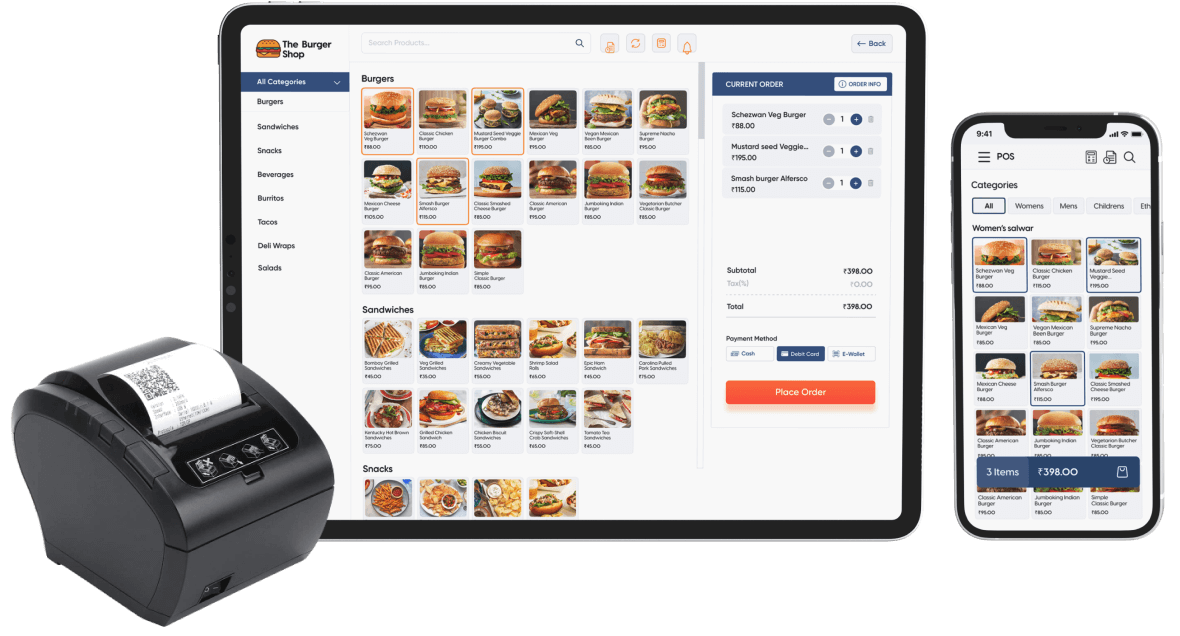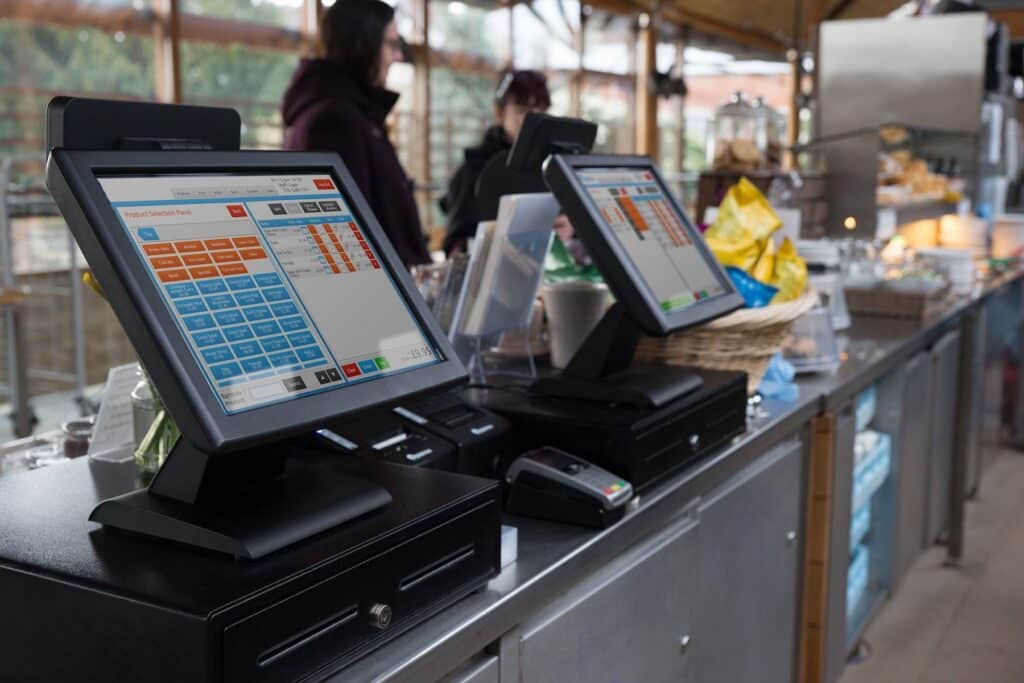When to switch to Restaurant POS Software?
Wiki Article
Exactly How POS System Works: A Comprehensive Guide for Business Owners
A POS system works as a crucial tool for modern-day organizations, integrating various components to enhance operations. It encompasses equipment like barcode scanners and software application to buy monitoring. This system not just refines purchases yet likewise manages stock and examines client behavior. Recognizing its performance can greatly influence an organization's efficiency and decision-making. What are the essential aspects that add to this effectiveness? Exploring these elements uses beneficial understandings.Comprehending the Parts of a POS System
A Factor of Sale (POS) system is made up of several essential components that collaborate to promote purchases and take care of company procedures. At its core, the equipment includes tools such as a cash money register, barcode scanner, invoice printer, and settlement incurable, all crucial for processing sales (Restaurant POS Software). The software program component manages inventory, sales tracking, and consumer information, supplying important understandings for business decisions.Additionally, data sources keep deal documents and consumer details, making certain information honesty and protection. Network connection enables real-time updates and access to cloud-based services, improving operational efficiency. Customer user interfaces, made for convenience of usage, allow staff to navigate the system promptly, reducing training time. With each other, these components produce a cohesive system that simplifies the sales process, improves consumer service, and help in reliable administration of organization sources. Understanding these parts is essential for local business owner looking for to maximize their POS systemsHow Sales Transactions Are Refined
When a customer decides to make a purchase, the sales deal starts a series of organized steps within the POS system. First, the cashier inputs the things being bought, which are checked via a barcode reader or manually gone into. This activity gets product information, including rates and relevant taxes, from the system's database.Next, the consumer is offered with the complete quantity due. The POS system then processes the settlement, whether via money, bank card, or mobile repayment approaches. For electronic payments, the POS safely connects with payment processors to accredit and verify the transaction.Once the repayment is validated, the system creates a receipt, which can be printed or sent electronically. This invoice works as receipt for the consumer. Ultimately, the purchase data is tape-recorded in the system, making certain exact sales documents and monetary monitoring for business.Stock Administration and Tracking
Effective stock monitoring and tracking are important parts of a POS system, as they guarantee that companies keep excellent supply levels and decrease disparities. A robust POS system permits for real-time inventory updates, mirroring sales and returns instantaneously. This allows entrepreneur to keep track of stock degrees accurately, ensuring that prominent things are easily available while preventing overstocking of less popular products.Additionally, progressed POS systems offer functions such as automatic stock signals and reorder pointers, enhancing the purchase process. Barcoding and RFID modern technology enhance precision in tracking inventory movement, lowering human mistake. Extensive reporting devices supply understandings into inventory turn over rates, aiding companies make informed choices regarding purchasing and product offerings. Eventually, efficient inventory monitoring via a POS system not just enhances functional performance however additionally enhances consumer fulfillment by making sure item schedule.
Assessing Customer Information and Insights
Consumer information evaluation acts as an effective tool for services utilizing a POS system. By gathering and analyzing transaction data, companies can uncover beneficial insights regarding customer behavior and preferences. This evaluation enables them to determine acquiring fads, peak buying times, and preferred products, consequently notifying supply choices and marketing strategies.Additionally, businesses can sector their client base, permitting customized marketing initiatives that satisfy details demographics or acquiring routines. Recognizing client loyalty patterns also aids in establishing targeted promos and incentives programs.The information amassed from a POS system can also expose insights into consumer responses, making it possible for businesses to make educated choices relating to product offerings look at these guys and service renovations. Ultimately, leveraging client information successfully can boost the general shopping experience, foster consumer fulfillment, and drive revenue growth.
Benefits of Applying a POS System
Implementing a POS system offers numerous advantages that can significantly boost company operations. To begin with, it streamlines transaction processes, decreasing wait times and improving consumer contentment. By automating sales processes, services can decrease human mistake and assurance precise record-keeping. In addition, a POS system offers beneficial data analytics, enabling proprietors to track sales fads and stock degrees in real-time. This understanding sustains educated decision-making, aiding to maximize supply administration and marketing strategies.Moreover, lots of POS systems integrate with other organization tools, such as audit software application, streamlining economic administration. Boosted worker administration attributes, such as tracking hours and performance, additional contribute to functional efficiency.Lastly, the implementation of a POS system can bring about enhanced profits via improved customer experiences and calculated insights, inevitably fostering service why not try here development and sustainability.
Frequently Asked Inquiries
What Sorts Of Companies Can Take Advantage Of a POS System?

Just how much Does a POS System Commonly Cost?
The cost of a POS system commonly varies from a few hundred to a number of thousand bucks, depending upon features, equipment, and software - Restaurant POS Software. Companies have to consider recurring charges for upkeep, assistance, and purchase processing when budgeting
Can I Integrate a POS System With Existing Software?
Incorporating a POS system with existing software application is usually viable. Many systems provide APIs or built-in compatibility functions, allowing businesses to simplify operations and enhance functionality by connecting different software program applications properly.What Training Is Required for Personnel to Make Use Of a POS System?
Training for personnel to use a POS system normally consists of understanding software program functionalities, processing transactions, managing supply, and handling consumer interactions - Restaurant POS Software. Practical presentations and hands-on method sessions enhance proficiency and confidence in utilizing the system efficientlyWhat Takes place if the Web Decreases While Utilizing a POS System?
If the net decreases during POS system usage, deals may be disrupted. Numerous systems offer offline capabilities, enabling basic operations to proceed, but full capability, consisting of real-time supply updates, will certainly be go to website limited.Report this wiki page